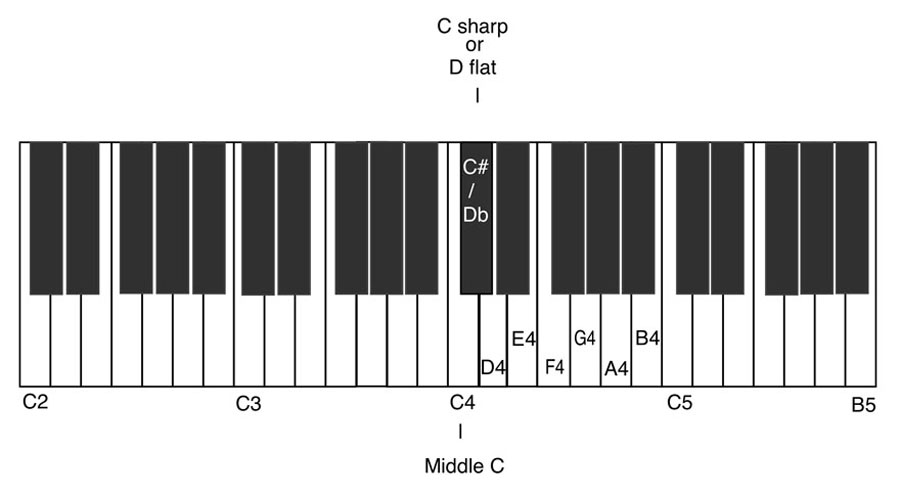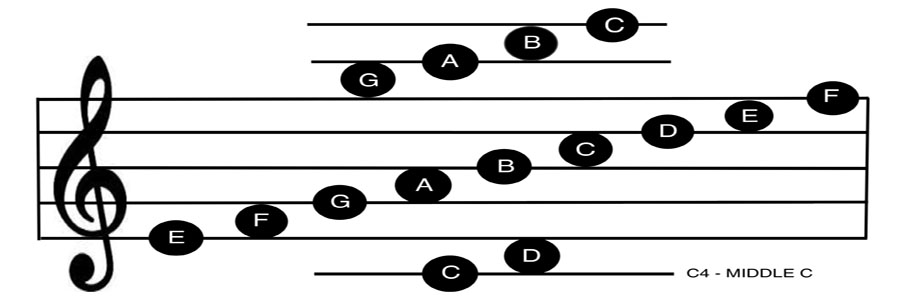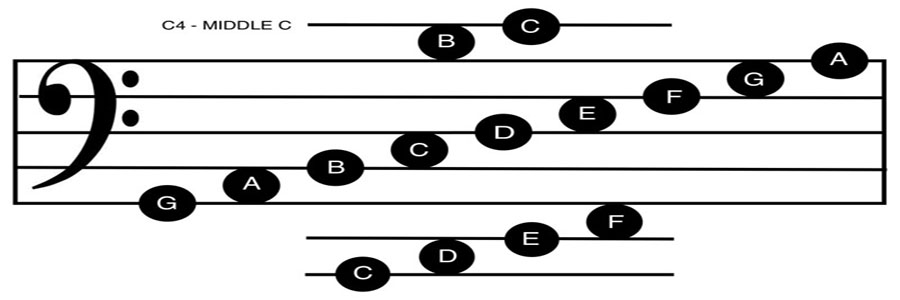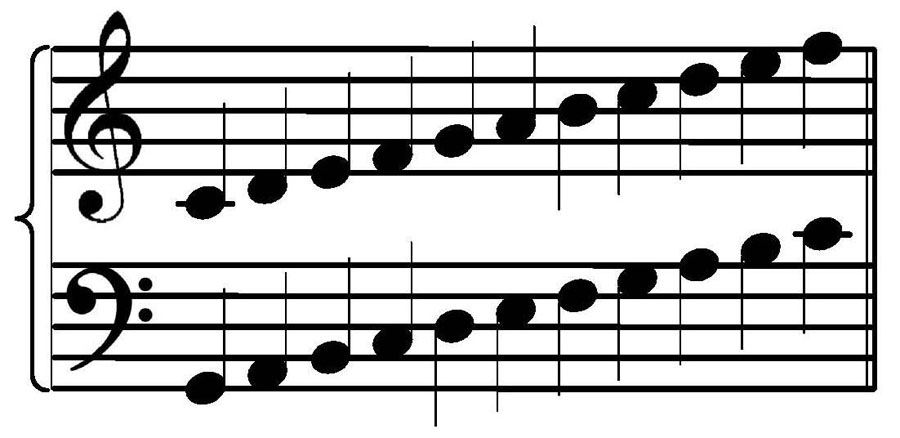Music Notation
Note identification on keyboard
Notes are partially identified using the letters C,D,E,F,G,A and B. They are uniquely identified by adding a number. A set, or octave, of notes begins with C and runs C, D, E, F, G, A and B. Thus octave 1 runs C1, D1, E1, F1, G1, A1, B1. The next octave starts with the next C ie. C2, D2, E2, F2, G2, A2, B2 and so on
A diagram of a keyboard with four octaves, starting at C2, is shown below. Octave 4 is shown with its notes labelled C4 (Middle C) , D4, E4, F4, G4, A4, and B4. C5 starts the next octave.
The black notes are arranged in groups of two and three with spaces between the groups. Every white C note starts immediately to the left of a two black note group. Thus C notes can be easilly identified. C4 (Middle C) is towards the middle of the keyboard. It is the major reference note in music.
Black notes are named with reference to the white notes either side of them. Looking at C4 on the keyboard the black note to the right is called C Sharp (C#). It can also be called D Flat (Db) with reference to the the D note on it's right.

Note identification on music score
Music is notated by writing musical symbols onto a set of five parallel lines known as a staff. There is a treble staff for certain higher notes and a Bass staff for lower notes. The pitch of a note is given by it's position on a line or a space in between lines. There are five lines and four spaces giving positions for nine notes. Extra notes can be added by placing them on 'ledger lines' above and below the staff.
Treble Staff
The note E4 is placed on the bottom line. The rest of the notes are placed in sequence on the other lines and spaces ending with F5 on the top line. C4 is on the bottom ledger line and D4 in the space above it. G5,A5,B5 andC6 are shown on the two ledger lines above the staff.
 The symbol at the start of the staff is the Treble Clef which indicates that this is the treble staff. The lower loop
curls around the G line. The bottom of the loop sits on the E line and the top is just under the B line.
The symbol at the start of the staff is the Treble Clef which indicates that this is the treble staff. The lower loop
curls around the G line. The bottom of the loop sits on the E line and the top is just under the B line.
Bass Staff
The notes start with G2 on the bottom line progressing up to A3 on the top line. Extra notes C2, D2, G2, and F2 are shown on the bottom two ledger lines. Notes B3 and C4 are shown on top ledger line.
The note C4 on the bass staff top ledger line is the same note as on the treble staff bottom ledger line. Hence the term MIDDLE C.
The symbol at the start of the staff is the Bass Clef indicating this is the Bass Staff. The two dots on the right straddle the F3 line. The bottom dot is in the E3 space. The top dot in the G3 space.
Grand Staff
For piano music the two staffs are often shown one above the other. The bass staff notes are usually played with the left hand and the treble notes with the right hand. Usually the treble staff denotes the melody of the piece while the bass staff shows the accompaniment.

The notes are shown with their tales pointing downwards in the upper section of the staff and pointing upwards in the lower section. This is to aid in identifying the note.